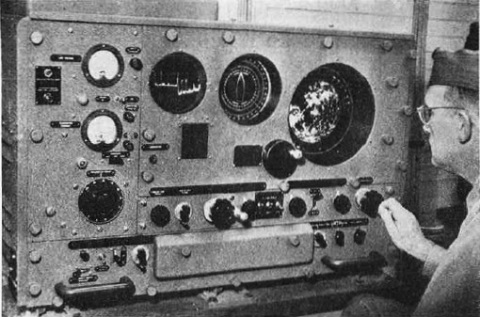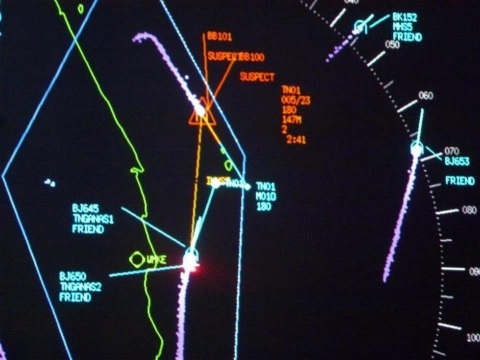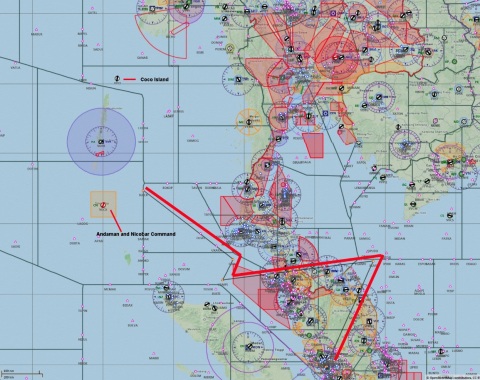From
http://tmfassociates.com/blog/2014/03/15/understanding-satellite-pings/
There’s so much confusion about the satellite communications aspects
of the MH370 incident that I thought it would be useful to give a little
bit of background and an analogy to aid understanding of what we know
and what we don’t. As with all analogies, this is perhaps
oversimplified, but may help those without a detailed knowledge of
satellite communications. I’m not a satellite designer, so I may also
have overlooked some of the intricacies – please feel free to chime in
with any corrections or amplifications.
Firstly, it needs to be made clear that the radar transponder
“squawks” and the satellite communications “pings” are from completely
separate systems (just because its talking about a transponder, that is
nothing to do with satellite transponders). The radar transponder sends
an amplified signal in response to reception an incoming radar
transmission, which has much more power than a simple reflection from
the metal skin of the plane, and has additional information about the
plane’s ID. If turned off, less sensitive civilian radar will struggle
to pick up the plane’s reflection, though military (air defense) radar
should still be able to see the plane. But military radar systems are
looking for hostile forces and have missed civilian aircraft in the past
(e.g. the
Mathias Rust incident).
Key point 1: The transponders are nothing to do with the satellite communications system.
So let’s turn to the satellite communications system. There has been
talk about ACARS transmissions for monitoring the status of the plane.
That is a communications protocol, separate from the underlying
satellite (or VHF radio) link. Think of ACARS as like Twitter. I can
send a message from my cellphone, which may or may not include my
location. When I’m at home, on WiFi, the message goes to Twitter via my
home broadband connection. Similarly, when the plane is over land, the
ACARS message goes over VHF radio to SITA, who then send it on to the
destination (e.g. Rolls Royce if the purpose is engine monitoring,
Malaysian Airlines if its an internal airline message, or the Air
Traffic Control center if its a navigation related message). [ACARS
messages can also be sent over long distances via HF radio, but its not
been suggested that was the case on MH370.]
With Twitter, when I leave home, my cellphone connects to the
cellular network, and my Twitter messages go over that. But it makes no
difference to the message and Twitter doesn’t care. Somewhat similarly,
when the plane goes over the ocean, the ACARS system sends its messages
over the plane’s satellite connection instead, but it doesn’t affect the
content of the message.
Just like I use AT&T for my cellphone service, the plane’s
satellite communication system is from Inmarsat, but so long as I have
bought the right data service from AT&T, Twitter will work, and so
long as I have an Inmarsat data service, ACARS will work fine.
Key point 2: ACARS is an “app” (communications protocol) which
can operate over different (satellite and VHF) communications links.
I can sign out of Twitter on my cellphone and then won’t be able to
transmit or receive Twitter messages. But that has nothing to do with
whether my cellphone is connected to AT&T’s network. Similarly, the
pilots can terminate ACARS sessions and stop reporting their position or
other data (see for example
this document), but that doesn’t affect whether the satellite terminal itself is connected to the Inmarsat network.
Key point 3: ACARS reporting can be disconnected without affecting the underlying satellite communications link.
On my cellphone, even if I’m not sending any data, AT&T needs to
know if I’m registered on the network. When I turn on my phone, or move
from cell to cell, the network exchanges data with the phone to make
sure the network knows which cell the phone is located in. More
importantly, even if I stay in one place with the phone in my pocket,
the cellphone network checks in occasionally to make sure that the phone
is still active (and say the battery hasn’t run out without the phone
signing off from the network, or I haven’t gone into an underground car
park and the connection has been lost), so that it knows what to do with
an incoming call. You don’t normally notice that, because the
timescales are pretty long (you don’t usually go into a car park for an
hour or two). As another example, if I go to France with my AT&T
phone, when I turn the phone on, it is registered in the Visitor
Location Register (VLR), but eventually, after I stop using the phone
there, my details are purged from the VLR.
Similarly with the Inmarsat connection, the network needs to know if
it should continue to assign network resources to a particular terminal
in case a communications link needs to be established. Not every
aeronautical terminal in the world will be active simultaneously, and
indeed there are quite a few that are rarely if ever used, so Inmarsat
doesn’t provision resources for all terminals to be used simultaneously.
However, once a given terminal are turned on, it needs to be
contactable while it is inflight. So the Inmarsat network checks in with
the terminal periodically (it appears to be roughly once an hour), to
ensure that it should continue to be included in the list of active
terminals and gets a message back to confirm that it should remain
registered. These are the “satellite pings” that have shown that MH370
was still powered on and active after the ACARS messages and radar
transponder were turned off, because the terminal was responding to the
requests from the Inmarsat network to confirm it was still connected.
Key point 4: The “satellite pings” are due to the Inmarsat
network checking that the terminal on board the aircraft is still
connected to the Inmarsat satellite system and the terminal responding
in the affirmative.
So now the question is how accurately does the Inmarsat network know
where the plane is located? To go back to my cellphone analogy, when the
network is checking my phone is still connected, it looks in the last
cell it was registered. If I move to a different cell, then my phone
should check in with the network to request a new assignment. But
AT&T doesn’t need to know my precise position within the cell, it
just needs to know where to route an incoming call. Similarly with
Inmarsat, there isn’t a need to know exactly where in a cell the plane
is located, just that its there and not somewhere (or nowhere) else.
Key point 5: The “satellite pings” indicate the plane is in a cell, but do not intrinsically give specific position information.
How big is a “cell” on the Inmarsat network and why the confusion?
First of all, we need to recognize that there are different Inmarsat
network architectures for different generations of aeronautical
terminals. Think of it like 2G, 3G and 4G phones. If I have a first
generation iPhone then I can only use 2G (GSM+EDGE), an iPhone 3G can
use 3G, and an iPhone 5 can use LTE. AT&T supports all of these
phones, but in slightly different ways. Inmarsat introduced a new
SwiftBroadband aeronautical service in 2010, using its latest generation
Inmarsat 4 satellites (like AT&T’s LTE network). That has
much smaller spot beams
(“cells”) than the older Inmarsat 3 satellites. And the Inmarsat 3
satellites (like AT&T’s 3G network) in turn have regional spot beams
as well as a “global” beam (covering an entire hemisphere) to support
the oldest aeronautical terminals.
As an aside, part of the SwiftBroadband communications protocol (essentially identical to BGAN) conveys (GPS-based)
position information to the satellite
when establishing a connection, so that the satellite can assign the
terminal to the right spot beam. But it isn’t clear that GPS data is
required as part of the “pings” which maintain registration on the
network. That was one additional source of confusion about whether the
specific position was being reported.
In any case, it appears that
MH370 had a Swift64 terminal onboard (or possibly
an older Aero-H or H+ terminal), not one of the latest SwiftBroadband terminals (that’s hardly surprising since SwiftBroadband is not yet fully approved for
aeronautical safety services
and is mostly used for passenger connectivity services at the moment,
which don’t seem to have been available onboard). This is the equivalent
of the iPhone 3G (or the original iPhone), not the newest version.
In the Indian Ocean, Inmarsat’s
Classic Aero services,
which are provided over both Swift64 and Aero-H/H+ terminals, operate
on the Inmarsat 3F1 satellite located at 64E (equivalent to AT&T’s
3G network not its latest LTE network), and can use both the regional
and global beams, but it appears that Inmarsat’s network only uses the
global beam for the “pings” to maintain network registration. Otherwise
it would have been possible to rule out a location in the Southern
Ocean.
Key point 6: The “satellite pings” were exchanged with the Inmarsat 3F1 satellite at 64E longitude through the global beam.
So how can anyone find the position within this enormous global beam? There are two potential ways to measure the location:
1) Look at the time delay for transmission of the signal to the
satellite. This would give you a range from the sub-satellite point if
measured accurately enough, which would be a circle on the Earth’s
surface.
2) Measure the power level of the signal as received at the satellite.
The antennas on the satellite and the plane amplify the signal more at
some elevation angles than others. If you know the transmission power
accurately enough, and know how much power was received, you can
estimate the angle it came from. This again would produce a similar
range from the sub-satellite point, expressed as a circle on the Earth’s
surface.
[UPDATE: I believe that the first of these approaches is more likely to produce an accurate estimate. See
my new blog post for more information on locating satellite pings.] We can see in the chart below (taken from a
Reuters Aerospace News photo
of the search area posted at the media center) that the search
locations are based on exactly these curves at a given distance from the
sub-satellite point. However, it is unlikely that the measurements are
more accurate than within say 100 miles.
We can also see that the arcs are cut off at each end. The cutoff due
east of the sub-satellite point may be due to the fact that the
transmissions would also potentially be received by Inmarsat’s Pacific
Ocean Region satellite at that point, and if they weren’t, then that
region would be ruled out (although others have suggested that military
radar plots have already been checked in these regions). Its possible
that the boundaries to the north and south have been established
similarly by the boundaries of Inmarsat’s Atlantic Ocean Region
satellite coverage, but they may instead be based on available fuel (or
simply the elapsed time multiplied by the maximum speed of the plane),
rather than the satellite measurements per se.
UPDATE (Mar 17): This picture was released by the Malaysian
government today. It shows clearly that the ends of the arcs were
determined based on the minimum and maximum speed of the aircraft, and
were not based on the overlap of the Inmarsat satellite coverage areas.
Key point 8: The position of the aircraft is being estimated
based on the signal timing/power measured at the satellite. Its not
based on the data content of any message and is not highly accurate.
ADDITIONAL POINT (Mar 17): Many have asked why it took so long to
figure out where these satellite pings were coming from. Taking an
extension of the analogy above, assume you have a friend staying in a
hotel. The hotel catches fire and burns to the ground and your friend’s
regular Twitter updates cease. For the first few days, the fire
department is trying to find his body in the hotel. When he can’t be
found the police check to see when his iPhone was last turned on. It
turns out the phone was still connected to AT&T’s network hours
after the fire. So then the police ask AT&T to figure out where the
phone was operating by looking at their database of network records.
That’s exactly the sequence of events here. The plane’s ACARS (and
radar) communications suddenly ceased and in the first few days,
everyone assumed there had been a crash and was looking for the crash
site. After no debris was found, investigators started to look at other
possibilities. Inmarsat discovered the plane’s terminal was still
connected to their network even after the ACARS messages ceased. Then it
took a bit more time to calculate the location of the pings from
Inmarsat’s network data records.
Finding missing people this way using cellphones is well known, but
no-one’s ever had to do it before in the aeronautical satellite world,
so its hardly surprising that this would be not be standard practice in
an air accident investigation. I’m sure it wasn’t standard practice for
cellphone companies in the 1980s either.
I hope that’s helpful. Let me know of any questions or need for further explanation.

















